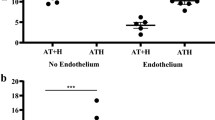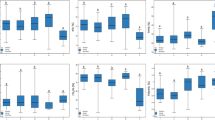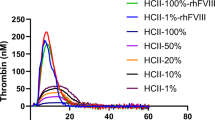Abstract
THE anticoagulant activity of leeches has been known for a long time. Haycraft1 obtained a saline extract of the anticoagulin from the head of a leech, and found that a dose of 0.01 mgm. would prevent the normal coagulation of 50 ml. blood for four and a half hours. Various investigators have since employed different techniques in their study of the anticoagulant action of leech extract. In our experiments with the common Indian cattle leech (Hirudinaria), an extract of the anticoagulant substance was prepared from the first eight segments of the body of the leech. The tissues were pounded with pure quartz sand in a mortar and the solution filtered through a cotton plug, freed from protein and buffered to pH 7.2 with Sørensen phosphate buffer.
This is a preview of subscription content, access via your institution
Access options
Subscribe to this journal
Receive 51 print issues and online access
$199.00 per year
only $3.90 per issue
Buy this article
- Purchase on SpringerLink
- Instant access to full article PDF
Prices may be subject to local taxes which are calculated during checkout
Similar content being viewed by others
References
Haycraft, J. B., Arch. Exper. Pathol. u. Pharm., 18 (1884).
Marshall, J. Pharm., 7 (1915).
Author information
Authors and Affiliations
Rights and permissions
About this article
Cite this article
LAL, M., CHOWDHURY, N. Anticoagulant Activity of the Indian Cattle Leech. Nature 166, 480 (1950). https://doi.org/10.1038/166480a0
Issue date:
DOI: https://doi.org/10.1038/166480a0
This article is cited by
-
Studies on the host-parasite interaction and role of esterases during biting of the Indian cattle leech, Poecilobdella granulosa
Zeitschrift f�r Parasitenkunde (1976)



